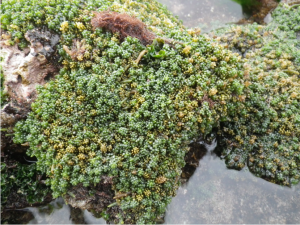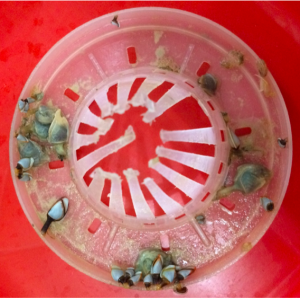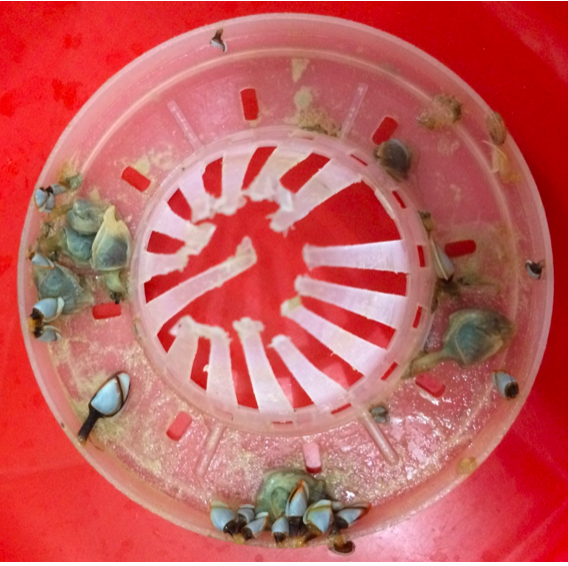By Jessica Howard
Marine invasive species
First off, we need to understand what invasive species actually are. They are defined as organisms that are not native to the area, and that cause harm to the ecosystem, economy and/or human health.
In the Galápagos Islands, the animals and plants that live here have evolved for millions of years, mostly isolated from the rest of the world. This means that while the animals here are perfectly suited for life on the islands, they are ecologically naïve – meaning that they do not have the natural defences to resist competition with, or predation by other foreign species.
When the Galápagos Islands formed, the first colonisers were great swimmers (sea lions), great flyers (birds), very light and carried by the wind (seeds, spiders), or incredibly lucky (rafting iguanas)! However, the human habitation of the islands has made it much easier for invasive species to be introduced to the archipelago, either by accident or on purpose.
For example, a species of green algae (Caulerpa racemosa) was introduced to the islands from the ballast water, anchors and hulls of cargo ships bringing food and other essentials to the islands for its human inhabitants. Caulerpa racemosa is now an established invasive species on several islands, competing with the native green algae for space. Research is still on going, but suggests that this species releases a toxin, caulerpin, into the water column that could be disastrous for any marine species that begin feeding on it as a replacement for the green algae they’re used to.

To combat the introduction of marine invasive species into the islands, many systems have been put in place to regulate shipping and reduce the risk of bringing in non-native species. This includes regular cleaning of boats, ballast water release control, anti-fouling paint and enforced quarantines.
Marine plastic and invasive species
I’m sure a lot of you reading this already know that plastic in the ocean isn’t a good thing! You may have seen images of turtles with straws stuck in their nose, or be aware of the dangers of turtles eating plastic bags instead of jellyfish, or maybe you’ve seen dolphins tangled up in old fishing nets. These are all very serious issues caused by marine debris, but there is another overlooked threat that is arguably even more serious!
Plastic in the oceans can provide a solid surface on which organisms can grow, the same way they’d attach to ships, or natural debris such as wood or seaweed. The organisms then live their life on the plastic, floating wherever the currents take them and filtering food from the surrounding seawater. However, because plastic is non biodegradable, these organisms can travel far greater distances than they would have been able to if they were attached to natural debris, and there is so much plastic in the oceans that provides so many homes for these organisms.

Now, because the movement of plastics throughout the oceans are pretty much unknown and completely unregulated, they provide a sneaky way for invasive species to reach the Galápagos Islands – and we would have no way of knowing they were travelling here until it was too late!
This poses a massive threat to Galápagos endemic and native species, as they will have very few defences, and may not be able to compete with introduced or invasive species.
Our research is surveying the plastics coming into and travelling throughout the Galápagos Islands, identifying any organisms attached to the plastics and assessing their threat to the local flora and fauna. This is all in the hope that people become more aware of the threats that plastics pose in the oceans, and hopefully beginning to find solutions to this growing problem!
